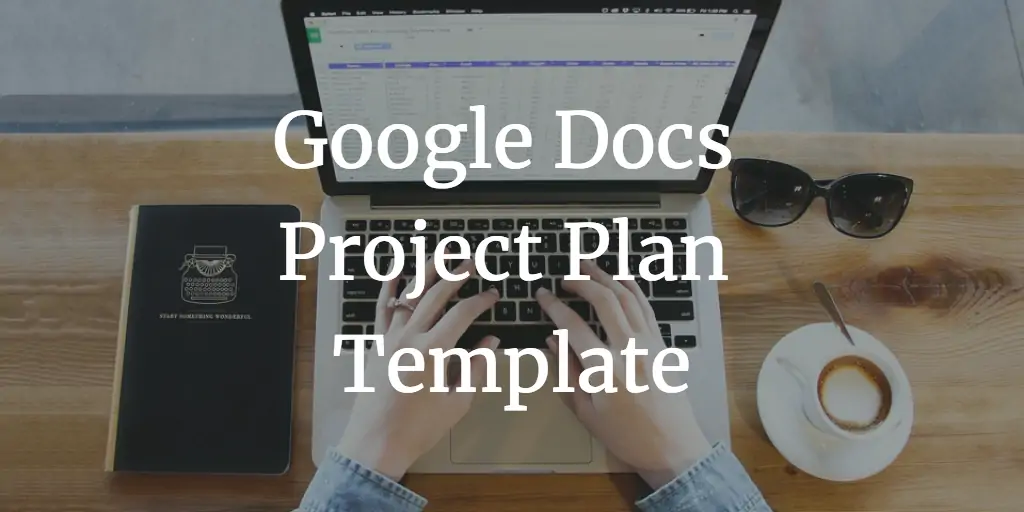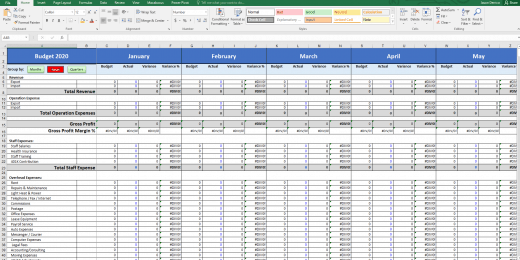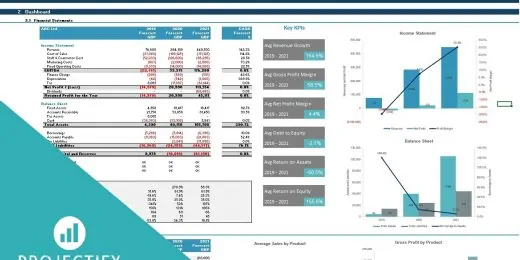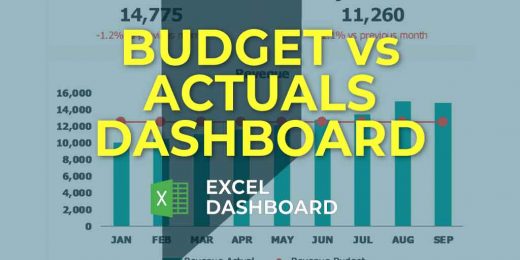Streamline Your Workflow: LBO Modelling

Streamlining your workflow in LBO modelling enhances efficiency and accuracy. Adopting best practices saves time and reduces errors.
Leveraging buyout models requires precise financial forecasting and efficient data management—key elements in successful leveraged buyout (LBO) transactions. Analysts and finance professionals who streamline their LBO modelling can better evaluate the financial viability of acquiring companies using debt. This involves a keen understanding of the target company’s cash flows, debt structures, and potential returns.
A streamlined workflow aids in crunching numbers faster, delivering clear insights into leveraged buyouts. Mastery of tools like Excel, along with the use of prebuilt templates and macros, can significantly cut down on modelling time. Thorough knowledge and advanced preparation ensure that professionals can handle the complexities of LBO analysis with confidence and ease, making workflow streamlining essential in the fast-paced world of finance.
Introduction To LBO Modelling
If you’re keen on mastering the art of deal-making in finance, getting a grip on LBO modelling is crucial. This powerful tool allows you to peek into the future of an investment by sorting the complex financials into a digestible format. Let’s dive into the nuts and bolts of LBO modelling, and see why it’s a skill set that can set you apart in the finance world.
What Is LBO Modelling?
LBO modelling stands for Leveraged Buyout modelling. It is a method in finance that forecasts the potential returns of buying a company using borrowed funds. The model looks at how to finance the purchase, predicts the business’s cash flow, and calculates the investment’s profitability.
Specific parts of the model include:
- The purchase price and how it’s funded
- Debt schedules and repayment plans
- Forecasts of the company’s future earnings
An LBO model helps lay out plans to enhance the company’s value and eventually sell it at a profit.
Importance Of LBO Modelling In Finance
In finance, LBO modelling plays a vital role. It’s a toolkit for investors to make informed decisions. A solid model can spell the difference between a successful investment and a missed opportunity. It helps evaluate if an LBO deal can meet target returns.
Key benefits include:
- Assessing risk versus reward
- Understanding debt capacity
- Strategizing for value creation
Firms use LBO modelling to plot out their course of action, ensuring every dollar invested works as hard as possible.
Preparation Phase
Embarking on LBO modelling requires meticulous planning and attention to detail. The Preparation Phase is crucial for a successful analysis. This phase involves collecting data and understanding the financials of the company in question. Let’s dive into the essential steps to lay the groundwork for an effective LBO model.
Gathering Necessary Financial Data
To accurately assess an LBO opportunity, thorough data collection is imperative. Start with these steps:
- Obtain historical financial statements to gauge past performance.
- Secure projections for future revenue and earnings.
- Collect industry benchmarks to compare the company’s standing.
Ensure all data sources are reliable and up-to-date. The quality of your model depends on the accuracy of this data.
Understanding The Target Company’s Cash Flows
The lifeblood of any LBO model is the target company’s cash flow. Vital steps to understand it include:
- Analyze historic cash flow patterns for an overview.
- Identify key drivers affecting cash flow, such as sales or cost of goods.
- Project future cash flows considering potential changes in the market.
Keep in mind, the clearer the picture of incoming and outgoing cash, the more robust your LBO model will be.
Key Components Of An LBO Model
Leveraged Buyout (LBO) models serve as vital tools in financial analysis, helping investors assess the value and potential of a company they aim to acquire with borrowed funds. A well-constructed LBO model can predict the future financial performance and offer insights into the viability of the planned leveraged buyout. The key components of an LBO model include detailed projections of the company’s cash flow, debt repayment schedules, and the assumptions underpinning various scenarios. Let’s delve into the specifics of these components.
Debt Schedules And Financing
Creating accurate debt schedules forms the backbone of any LBO model. These schedules reflect when and how the acquired company will pay back the borrowed money. Financing is usually layered into various tranches with differing interest rates and maturities. Efficient models break down each tranche:
- Senior debt, often comprising bank loans with lower interest rates
- Mezzanine debt, which stands between senior debt and equity
- Subordinated debt, carrying higher interest rates due to increased risk
Modelers input these layers into a table format, clearly delineating payment schedules and covenants.
A debt schedule typically includes:
| Debt Type | Interest Rate | Principal Amount | Maturity |
|---|---|---|---|
| Senior | Varies | $XXX | YYYY |
| Mezzanine | Higher | $XXX | YYYY |
| Subordinated | Highest | $XXX | YYYY |
Assumptions In Lbo Scenarios
The assumptions used in LBO models are critical as they can significantly alter the outcome. They cover a wide range of factors:
- Revenue growth, based on historical data and future projections
- Operating margins, estimated using past performance
- Capital expenditures, essential for maintaining or expanding operations
- Working capital needs, to ensure the company can cover short-term liabilities
A clear set of assumptions allows investors to play with various scenarios—such as a baseline case, an optimistic case, and a pessimistic case—to understand the potential risks and returns.
Designing The Model
When it comes to LBO modeling, designing a robust Excel model is key. This model is where you will forecast the financial future of a company. You must do this by considering all variables. It should also handle complex calculations that come with leveraged buyouts. A well-designed model saves time and reduces errors. Now, let’s dive into how to set up the environment and interface effectively.
Setting Up The Excel Environment
Creating the right Excel environment is crucial for efficient LBO modeling. Start by ensuring your Excel version is up to date. This ensures you have the latest features and security updates.
Adjust the default settings for calculations and error checking. This helps avoid mistakes during the modeling process. Then, organize your workbook with clear and consistent naming conventions. Use separate sheets for assumptions, inputs, calculations, and outputs. This structure makes your model transparent and easy to navigate.
Creating A User-friendly Interface
A user-friendly interface in LBO modeling ensures simplicity and efficiency. Start by integrating clear instructions and labels within your model. Use data validation and drop-down lists to guide user input. This minimizes errors and enhances the model’s integrity.
Keep formatting clean and use color-coding to differentiate between inputs, calculations, and outputs. Limit the use of complex formulas where simpler ones will do. Offer clear visuals through charts and graphs to summarize data effectively. This makes your model not just user-friendly but also visually appealing for presentations.
Remember, designing an LBO model in Excel means creating a balance. It should be comprehensive yet not overwhelming and detailed without being cluttered.
| Area | Focus |
|---|---|
| Excel Setup | Update, settings, sheet organization |
| Interface Design | Instructions, data validation, color-coding |
- Streamline your workflow with an organized Excel environment.
- Design a user interface that simplifies user interaction.
Streamlining The Modelling Process
Expediting the LBO modelling process is vital for finance professionals. It involves complex analyses which, if optimized efficiently, can save time and reduce errors. Streamlining doesn’t just speed up tasks; it enhances the entire model’s accuracy and usefulness. Let’s dive into how a well-streamlined LBO model can make your workflow more efficient.
Applying Best Practices For Efficiency
Utilizing industry best practices paves the way for effective LBO modelling. Key components include:
- Consistent formatting for clarity.
- Clear assumptions for easy updates.
- Use of predefined templates for uniformity.
Proper documentation ensures every step is transparent and traceable. This minimizes risks and saves time in your LBO analysis. Efficiency drives better investment decisions.
Automation Of Repetitive Tasks
Many steps in LBO modelling repeat throughout the process. Automating these can significantly cut down on manual input and errors. Examples of automation include:
- Data entry: Importing data directly from sources.
- Calculations: Using formulas to handle recurrent computations.
- Reporting: Generating standard reports with a click.
By implementing automation tools, such as macros in Excel, finance professionals reclaim valuable time. They focus more on strategic analysis and less on monotonous tasks.
Analyzing LBO Model Outputs
An LBO model is a financial tool used to assess leveraged buyouts. It’s vital to know how to scrutinize the results it produces. Properly analyzing LBO model outputs enables better strategic decisions during investment opportunities.
Interpreting Key Financial Metrics
Financial metrics are the backbone of any LBO model. They tell the story of profitability and risks. Important metrics include:
- Internal Rate of Return (IRR): It shows the percentage of money made or lost on an investment over time.
- Return on Investment (ROI): It measures the gain from an investment relative to the investment’s cost.
- Debt Service Coverage Ratio (DSCR): It assesses a firm’s ability to use operating income to cover all debt payments.
Understanding these metrics help in making informed decisions about pursuing a buyout opportunity.
Sensitivity Analysis And Stress Testing
Sensitivity analysis and stress testing are crucial for predicting future performance. They help in understanding:
- How changing variables affect IRR.
- The resilience of the investment in different economic conditions.
These analyses show where the LBO model is most sensitive. They guide in planning for potential risks.
Case Studies
Exploring how businesses enhance efficiency with LBO modeling is eye-opening. We learn best by examples. Let’s dive into real-world case studies of LBO transactions. You will see victories and setbacks. These stories are full of insights for anyone looking to master LBOs.
Successful Lbo Transactions
Success in LBO deals often means incredible returns. We highlight some top performers here:
- Hilton Hotels – Acquired in 2007, it became one of the most profitable buyouts.
- Dollar General – After its acquisition, the company thrived, showing strong growth.
Hilton Hotels and Dollar General stand out with their exceptional strategy and execution. These case studies reveal key tactics:
- Deep industry knowledge is crucial.
- Operational improvements can unlock value.
- Strategic exits maximize profits.
How do these successes shape future LBOs? They teach careful planning, solid business understanding, and flawless execution.
Lessons Learned From Failed Lbos
Failed LBOs offer valuable lessons. Here’s what went wrong:
- Toys “R” Us – Debt overwhelmed them, leading to bankruptcy.
- Energy Future Holdings – Market shifts caused massive losses.
Takeaways:
| Case | Lesson |
|---|---|
| Toys “R” Us | Keep debt at manageable levels. |
| Energy Future Holdings | Stay adaptable to market changes. |
Studying these cases, we learn to manage debt wisely and adapt quickly. Poor planning and ignoring market shifts lead to downfall.
Advanced Modelling Techniques
Leverage Advanced Modelling Techniques in LBO Modelling to make your workflow more efficient. These methods allow for precise analysis and smarter financial decision-making in leveraged buyouts. Now, let’s explore how tax considerations and multiple exit strategies can significantly affect your LBO models.
Incorporating Tax Considerations
Tax impacts every financial model. In LBO Modelling, tax treatment can change your results. Use the following tips to make your model tax-smart:
- Identify different tax rates applicable to various revenue streams.
- Apply the correct depreciation methods for tax purposes.
- Forecast potential changes in tax legislation.
Modelling For Multiple Exit Strategies
Plan for uncertainties by modelling multiple exit scenarios.
- Determine the best case, worst case, and most likely case exits.
- Assess how different time frames affect return on investment.
- Quantify the impact of various market conditions on exit valuations.
| Exit Strategy | Time Frame | ROI Impact |
|---|---|---|
| Strategy A | Short-term | High |
| Strategy B | Mid-term | Medium |
| Strategy C | Long-term | Variable |
Common Pitfalls And How To Avoid Them
When creating LBO models, it is easy to stumble. Even professionals can slip. Below, learn about common errors and how you can dodge them to streamline your workflow.
Overlooking Critical Assumptions
An LBO model relies on assumptions. These are the model’s building blocks. Missing an assumption is like missing a puzzle piece. To prevent this:
- Check all inputs. Twice is nice.
- List assumptions. Make them visible up front.
- Ask others to review. Fresh eyes catch hidden mistakes.
Ensuring Model Accuracy And Validation
Accurate models lead to trustworthy projections. Validate every step to ensure reliability. To boost accuracy:
- Cross-check figures. Use multiple data sources.
- Validate formulas. Confirm every calculation.
- Test scenarios. Try different outcomes.
Enhancing Your LBO Modelling Skills
Leveraged Buyout (LBO) Modelling stands as a vital skill in finance. To excel in creating robust LBO models, continuous skill enhancement is key. Professionals aim for precision, speed, and depth in their analyses. This section delves into effective ways to enhance your LBO modelling skills.
Continued Learning And Certification
Stay ahead in the finance world with up-to-date LBO knowledge. Consider the following paths:
- Online Courses: Register for courses that focus on LBO and financial modelling.
- Workshops: Join hands-on workshops for practical experience.
- Certifications: Earn certifications from recognized institutions to validate your skills.
Make mastery your goal. Stay informed about the latest industry trends and methodologies. Seek feedback from seasoned professionals on your LBO models to spot areas for improvement.
Leveraging Industry Resources And Tools
Enhanced skillsets come from using the right resources and tools. Integrate the following into your workflow:
- Software: Master tools like Excel, Argus, or dedicated LBO software.
- Templates: Use templates from reputable sources to kick-start your models.
- Forums and Blogs: Follow top finance forums and blogs for insights.
Join online communities for finance professionals. Share knowledge, ask questions, and apply best practices from peers in LBO modelling. Invest time in exploring new tools and adapt your technique to increase efficiency.
The Future Of LBO Modelling
The Future of LBO Modelling shines bright as private equity firms streamline decision-making processes and optimize investments. Leveraging the latest trends and technological advancements, Leveraged Buyout (LBO) modelling is set for an impressive evolution. This transforms how analysts forecast financial outcomes and explore strategic opportunities.
Trends In Private Equity
Keeping pace with a rapidly changing financial landscape, private equity (PE) trends greatly influence LBO modelling:
- Increased Dry Powder: Firms hold record levels of unspent capital, prompting precision in target selection.
- ESG Focus: Environmental, Social, and Governance factors become critical in evaluating deals, mirroring investor values.
- Co-investments: Investors directly engage in deals, necessitating transparent and collaborative modelling frameworks.
Technological Advancements In Modelling
The advent of cutting-edge technologies reshapes the approach to LBO modelling:
| Technology | Impact on LBO Modelling |
|---|---|
| AI & Machine Learning | Predictive analytics refine investment strategies and risk assessments. |
| Robotic Process Automation | Automates repetitive tasks, freeing analysts for high-level analysis. |
| Cloud Computing | Facilitates remote collaboration and data sharing in real-time. |
PE firms adopt these technologies to gain a competitive edge. They do so by achieving greater accuracy and speed in their financial models.
Frequently Asked Questions
What Is LBO Modelling?
Leveraged Buyout (LBO) modelling is a financial tool. It helps investors evaluate the potential returns from acquiring a company using significant amounts of borrowed money.
Why Use LBO Models In Workflow?
LBO models are pivotal in assessing the viability of leveraged buyouts. They enable analysts to project returns and risks, aiding in making informed investment decisions.
Can LBO Modelling Predict Financial Outcomes?
Yes, LBO modelling can predict potential financial outcomes. By simulating different scenarios, it can provide insights on investment returns and debt repayment capacities.
What Software Is Best For LBO Modelling?
Excel remains the top choice for LBO modelling due to its flexibility. It allows users to tailor models precisely to their needs for intricate financial analyses.
Conclusion
Embracing LBO modeling can revolutionize your workflow efficiency. It’s about making complex financial structures manageable and more intuitive. As you equip yourself with these robust modeling techniques, anticipate enhanced decision-making and refined investment strategies. Start refining your skill set today and witness the transformative impact on your financial analysis.
Let LBO modeling be the catalyst for your workflow mastery.



















































